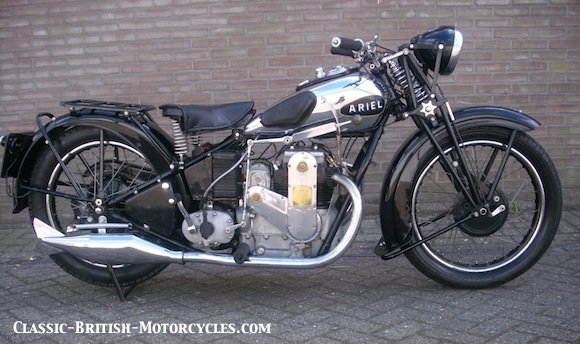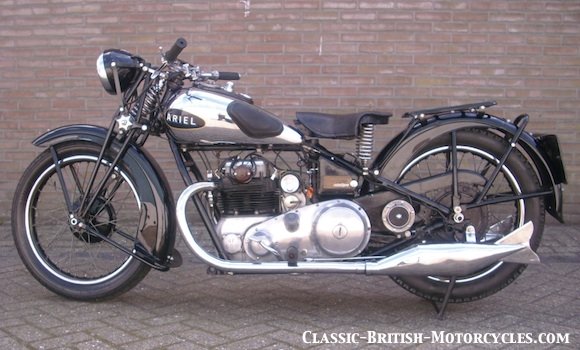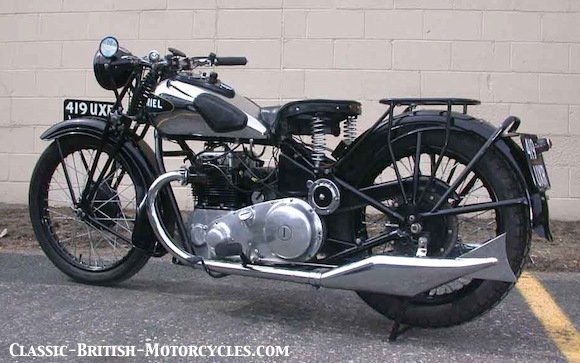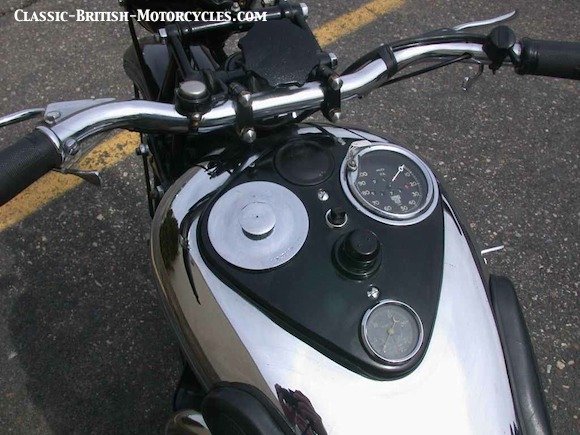1932 Aerial Square Four
1932 ARIEL SQUARE FOUR GROWS TO 600cc
The first production Ariel Square Four was the 1931 Model 4F and it displaced 500cc. For the 1932 model year, the bore was increased by 5mm, pushing displacement up to 601cc to accommodate the growing sidecar market in the UK. In its new form, it covered 700 miles (1,127 km) in just 700 minutes during the Maudes Trophy endurance test, followed by an 87 mph timed lap (140 km/h).

BASIC LAYOUT OF THE 1932 ARIEL SQUARE FOUR
Designed by Edward Turner (would would later go on to design the first ‘modern’ parallel twin in the 1938 Triumph Speed Twin. The 1932 Ariel Square Four has two crankshafts (traversely oriented, one behind the other) with the four pistons forming a square in a one-piece cylinder block and a separate one-piece head. The Single Overhead Camshaft is driven by a single chain on the right side of the engine. The biggest limit on performance was the long path between the single Amal carburetor and the cylinders. The OHC 4F evolved into the OHV 4G in 1936.



1932 Ariel Square Four SPECIFICATIONS
|
Engine type Displacement Bore & Stroke Compression Carburetor Engine output Ignition Primary drive Clutch Gearbox Final drive Frame type Suspension, front Suspension, rear Brake, front Brake, rear Tire, front Tire, rear Fuel capacity Wheelbase Seat height Ground clearance Dry weight |
Air-cooled OHC twin-crankshaft 4-cylinder 500cc & 600cccc NA NA 1- SU side-draft NA Lucas magneto Chain in sealed oil bath Multi-plate Burman 4-speed, right foot shift Chain Duplex, full-cradle Compression spring None, rigid frame 7″ SLS drum 7″ SLS drum 3.25″ X 26″ Dunlop 3.25″ X 26″ Dunlop 3.5 gal NA NA NA NA |


